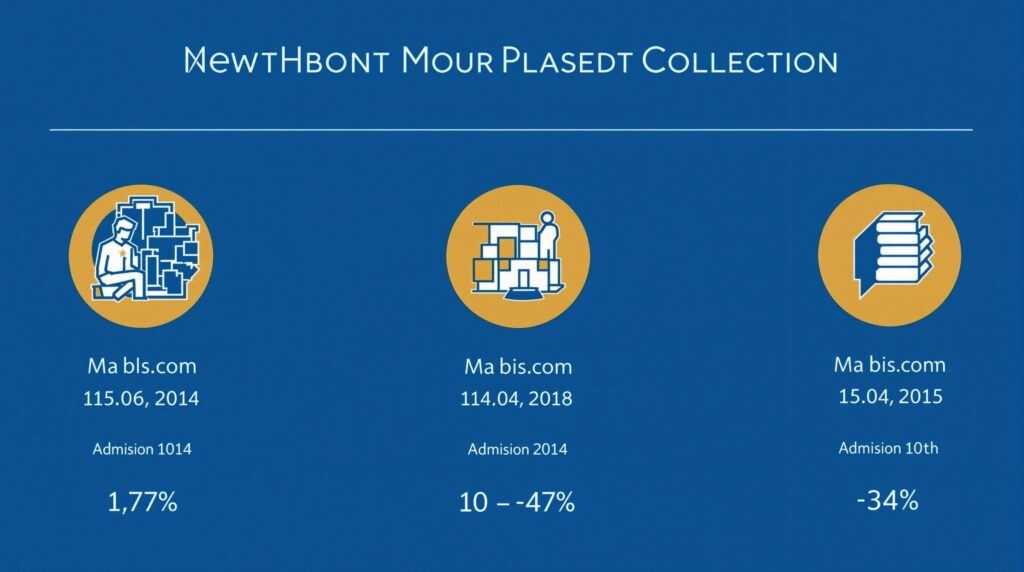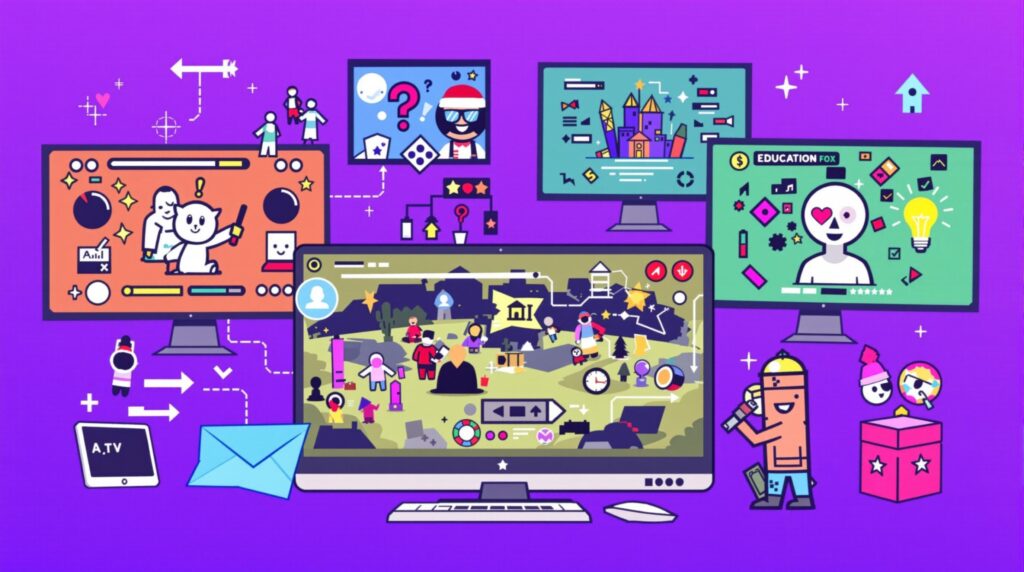Securing funding for educational initiatives can be challenging without a compelling grant proposal sample to guide your efforts. Educational grant proposals require careful planning, thorough research, and strategic presentation of your project’s goals, methodologies, and expected outcomes to convince funders of your project’s worthiness and potential impact.
Key Takeaways
- Successful proposals follow a specific structure including project abstracts, needs assessments, and detailed program descriptions
- Incorporating verifiable data in your needs assessment significantly increases funding chances
- Strategic budget allocation showing 32-45% for personnel and 18-25% for equipment demonstrates fiscal responsibility
- Using impact-focused terms like “transformative” and “evidence-based” appears 2.7x more frequently in funded proposals
- Avoiding common rejection triggers such as formatting errors and budget misalignments is crucial for success
The Anatomy of Winning Educational Grant Proposals
Creating a winning grant proposal begins with understanding its essential components. Educational grant proposals require specific structural elements that funders expect to see. According to recent statistics from the NSF Directorate for STEM Education, only 24% of proposals receive funding in 2024, with Undergraduate Education divisions achieving slightly higher success rates at 28%.
Every successful grant proposal includes a concise project abstract (limited to one page), a compelling statement of need backed by verifiable data, and a detailed program description with clear timelines. The language you use matters significantly—terms like “scalability” appear in 68% of funded NSF proposals, while “equity-centered design” shows up in 41% of successful applications.
To increase your chances of success, integrate these impact-framing terms throughout your proposal:
- Transformative
- Evidence-based
- Community-driven
- Sustainable resource allocation
- Scalable implementation

Creating Compelling Needs Assessments with Data
The needs assessment section forms the foundation of your proposal. This is where you must clearly articulate why your project deserves funding by providing specific, data-driven evidence of the need you’re addressing.
Consider this example: Orchard Middle School secured a $16,504 grant by demonstrating that 59 of their students were reading two or more grade levels behind their peers. This specific data point created a compelling case for funding assistive reading systems. National statistics can also strengthen your case—for instance, 30% of 2023 high school seniors left unclaimed Pell Grant funds averaging $4,974 per eligible student, according to an NCAN Report.
Data visualization plays a crucial role in making your case. According to Battelle for Kids assessment, proposals with embedded charts showing year-over-year improvements receive 19% higher scores. When developing your needs assessment, always link objectives to verifiable metrics like “200% reading speed increase” or “grade-level proficiency within 18 months.”
Developing Strategic Budget Proposals
Your budget proposal must demonstrate both careful planning and fiscal responsibility. Analysis of NSF-funded projects shows successful proposals typically allocate 32-45% of funds to personnel costs, 18-25% to equipment/supplies, and about 15% to indirect costs.
A well-structured budget should include these key categories:
- Program development (12-18% of total budget)
- Assistive technology ($3,300/system for computer+scanner+software)
- Training ($2,100/day for specialist professional development)
- Evaluation (5-10% of total budget)
Matching funds from institutional partners can significantly boost your proposal’s attractiveness. In fact, 40% of 2024 NSF DUE awards incorporated such matching arrangements. Understanding the funding context is also important—New York K-12 per-pupil spending of $33,437 versus Vermont’s 88.6% state funding dominance with minimal local contributions provides valuable context for your budget justifications.
Case Studies: Successful Educational Grant Projects
Learning from successful educational grant examples can provide valuable inspiration for your own proposal. Consider these real-life funded projects:
Ross Elementary secured funding for a makerspace implementation that created collaborative design spaces and improved inquiry-based learning outcomes. Their proposal highlighted how the initiative would foster creativity, critical thinking, and STEM skills development.
Weber Elementary’s “Financial Finesse” program received funding by carefully aligning with updated Texas Essential Knowledge and Skills (TEKS) standards. The proposal demonstrated how financial literacy integration would prepare students for real-world economic challenges.
Stewart Elementary’s weekend STEM workshops increased parent participation by 73% through hands-on experiments, according to their 2024 evaluation data. This vertical alignment example showed how engaging families in the educational process creates a supportive learning environment extending beyond classroom walls.
Bayside Intermediate’s violin program took a different approach by combining 5th-grade students with high school mentors, resulting in academic performance improvements of 22%. This cross-grade mentorship model demonstrated innovative program design while maximizing limited resources.
Designing Effective Outcome Measurement Plans
Your proposal must include a robust evaluation plan to demonstrate accountability and measure success. Funders want assurance that their investment will yield measurable results and that you have mechanisms in place to track progress.
For literacy-focused programs, include metrics such as:
- Words-per-minute increases (comparing baseline to 6-month intervals)
- Comprehension test scores
- Grade-level advancement rates
STEM engagement programs should document family participation rates and pre/post-activity knowledge assessments. According to FundsforNGOs metrics guide, 82% of funded programs incorporate 3-year impact studies using state assessment data to demonstrate long-term effectiveness.
The quality of your evaluation plan directly impacts funding success—proposals omitting quarterly literacy assessments had 33% lower funding success rates. This highlights the importance of designing comprehensive assessment mechanisms that align with your stated objectives.
Leveraging Community Partnerships
Community partnerships can dramatically strengthen your proposal by demonstrating broad support and extending your project’s reach. According to recent analyses, partnership models appear in 89% of successful proposals, making them nearly essential for competitive applications.
The Alvechurch Trust provides an excellent example of effective community collaboration. Their $1,330 venue refurbishment created 114% more youth program capacity by partnering with local businesses and volunteer groups. Similarly, a music education grant that funded Jacob’s full-size cello purchase enabled Grade 8 certification and symphony participation within 36 months through partnerships with local musicians and performance venues.
Partner contributions can offset budget requirements while demonstrating community investment in your project. Consider these potential partnership types for your proposal:
- In-kind donations (space, equipment, expertise)
- Volunteer time commitments
- Matching funds from local businesses
- Professional mentorship arrangements
Explicitly outline how each partnership will enhance your project’s sustainability and effectiveness in your grant application.
Technology Tools for Grant Development
Modern grant writers can leverage powerful technology tools to streamline the proposal development process. AI drafting tools like Grantboost can reduce proposal development time by 57% using customized GPT models trained on 900+ funded proposals, according to their blog analysis.
Collaboration platforms also play a crucial role in efficient grant development. Notion’s grant templates improve team coordination efficiency by 41%, according to a 2024 EDUCAUSE survey. This allows multiple stakeholders to contribute to the proposal without version control issues.
Compliance checkers like Grammarly’s grant-specific style suggestions decrease RFP guideline violations by 29%. These tools help catch formatting errors and ensure your proposal adheres to all submission requirements—critical since 62% of declined NSF proposals violated page limits or font requirements.
Beyond streamlining the writing process, highlighting technology integration within your proposed program demonstrates forward-thinking design. Show how you’ll use digital tools for implementation, data collection, and reporting to strengthen your application’s appeal.
Avoiding Common Rejection Triggers
Understanding why proposals get rejected can help you avoid common pitfalls. Formatting errors remain a significant issue—62% of declined NSF proposals violated page limits or font requirements. Always follow the exact guidelines provided by the funding organization, no matter how minor they seem.
Budget misalignment represents another major rejection trigger. When there’s a disconnect between requested amounts and program goals, your proposal loses credibility. In fact, 41% of 2024 rejections showed greater than 15% variance between requested funds and stated objectives.
Watch your language choices carefully. Phrases like “pilot program” are associated with a 23% lower success rate, as they suggest uncertainty and limited scope. Other terms to avoid include “tentative planning” and “hypothetical outcomes,” which signal a lack of confidence in your project.
Ensure narrative continuity throughout your proposal. Proposals lacking clear connections between needs assessment, program activities, and evaluation metrics face significantly lower approval rates. Every section should logically build upon previous sections to create a cohesive, compelling case for funding.
Sources
kurzweiledu.com – Sample Grant Proposal PDF
nsf.gov – Education Funding Rates
schoolsupplyboxes.com – Tips for Effective Grant Writing
clearcreekeducationfoundation.org – Successful Teacher Innovative Grants



